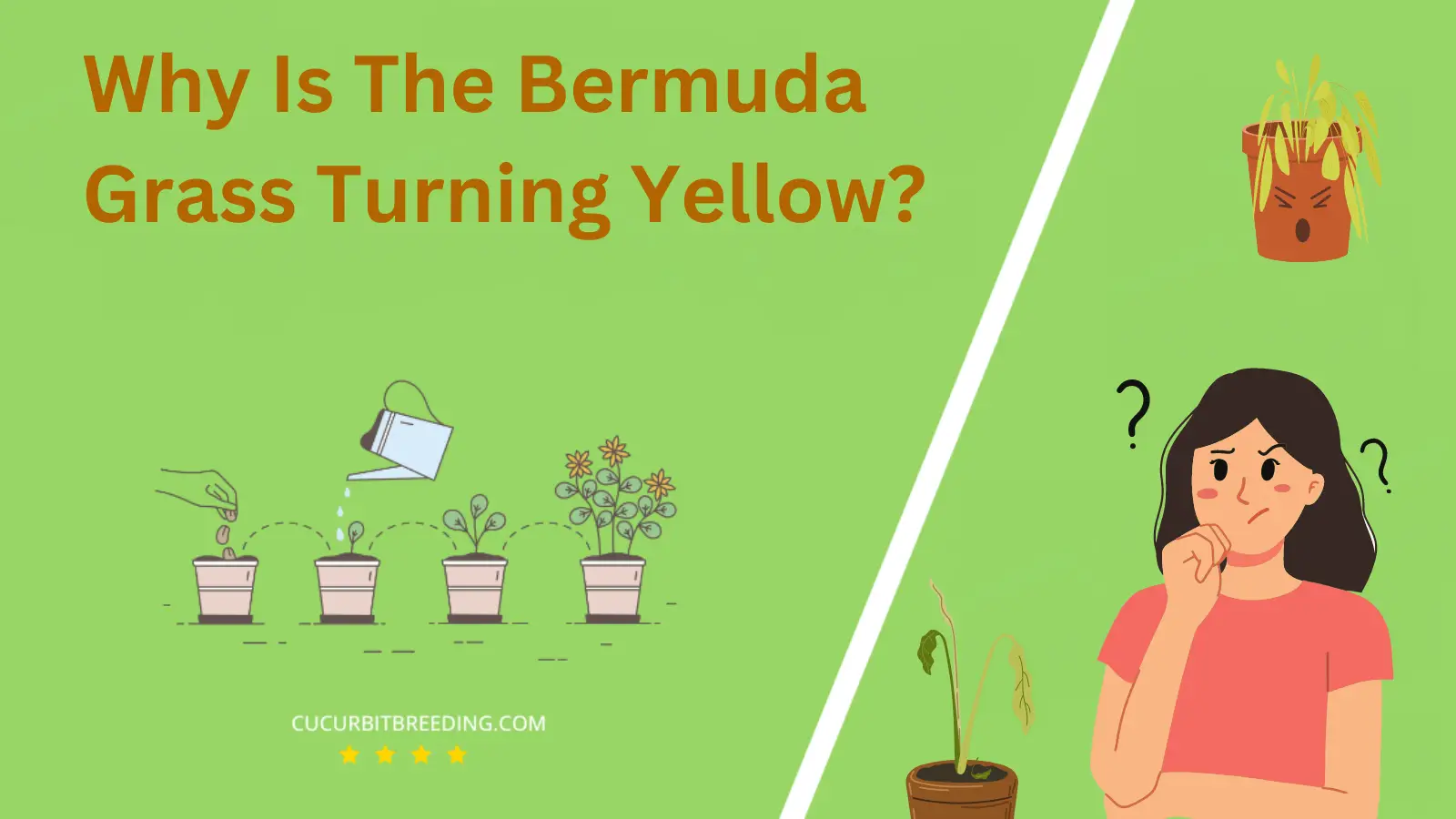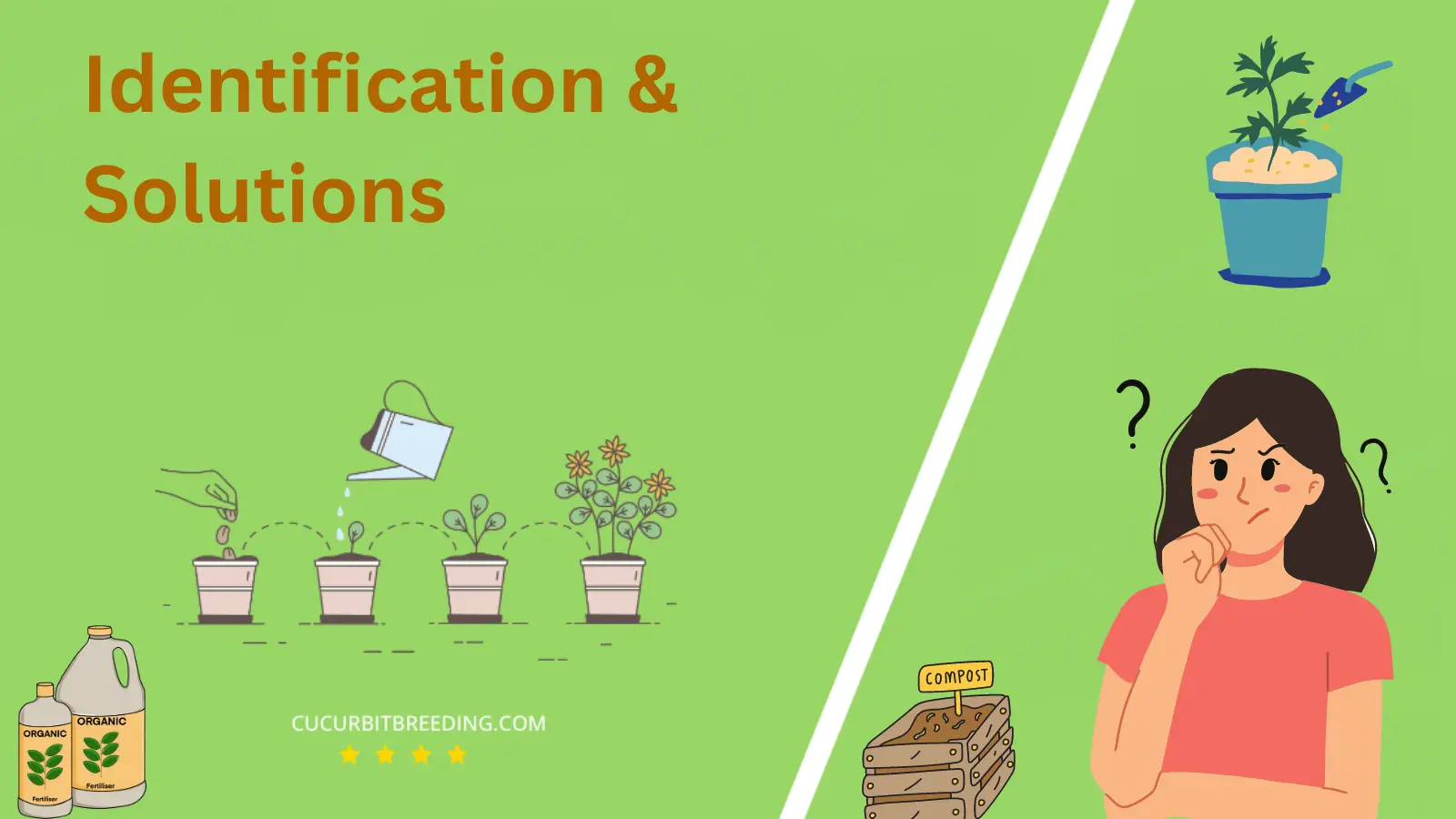
If your once lush, green Bermuda grass is turning yellow, you’re likely filled with concern and curiosity. Bermuda grass, adored for its resistance and beauty, is rarely seen in anything but the most vibrant shades of green.
So, what could possibly go wrong? Several factors ranging from environmental conditions to specific diseases might rob this grass of its healthy hue. Unravel the mysteries and solutions behind your Bermuda grass’s color change here.
Why Is The Bermuda Grass Turning Yellow?
1. Lack of water/moisture
| Description | causes the leaf to lose chlorophyll and turn yellow. |
|---|---|
| Solution | Increase watering frequency to provide sufficient moisture for the Bermuda grass. |
A deficiency in water or moisture can cause Bermuda grass to turn yellow because it limits the grass’s ability to conduct photosynthesis effectively. This critical biological process allows Bermuda grass to convert sunlight into energy for growth and development, and it heavily relies on sufficient hydration. Insufficient hydration can therefore interrupt photosynthesis, leading to a pale or yellow hue as growth deteriorates or stagnates.
To mitigate this issue, it’s advisable to pay attention to your lawn’s watering regimen. Bermuda grass thrives under consistent and sufficient watering, usually needing around 1 to 1.5 inches of water in a week. To ensure effective watering, using a slow-release method that allows water to penetrate the soil deeply serves best, especially in the early mornings when evaporation rates are minimal. In drier climates or during hot weather, Bermuda grass may need more frequent watering to counteract the increased evaporation.
In addition, try to maintain a proper watering schedule, and consider installing an automatic sprinkler system for better consistency. Proper working and consistent watering schedule will help the grass remain well-hydrated, encouraging healthier growth and a more vibrant green color.
2. Nutrient deficiencies
| Description | can cause leaf yellowing in Bermuda grass due to lack of essential minerals. |
|---|---|
| Solution | Increase soil fertility by applying balanced fertilizer and correcting any nutrient deficiencies through soil testing. |
**Fixing nutrient deficiency** begins with a soil test to identify which nutrients are lacking. After determining the deficient nutrients, you can supplement your soil. Lime can be added to raise pH level, or sulphur to lower it, aiming to reach optimal levels for grass growth.
Regularly rotating your fertilizer types can ensure a well-rounded nutrient supply. Using a high-quality, balanced fertilizer will provide the Bermuda grass with the nitrogen, phosphorus, and potassium it needs to maintain its green color.
Also, consider amending the soil with organic matter, like compost, to improve its structure and nutrient content.
In addition, watering deeply but infrequently will promote stronger roots and help the grass better absorb nutrients. Proper mowing is also important. Cutting too short can stress the grass, while letting it grow too high can block sunlight, both contributing to yellowing. Maintaining a consistent mowing height can help prevent this issue.
Properly managing the nutrients in your soil and following good lawn care practices can aid in returning your Bermuda grass to its lush, green color.
3. Soil pH imbalance
| Description | The soil pH imbalance disrupts nutrient absorption, causing Bermuda grass leaves to turn yellow. |
|---|---|
| Solution | Adjust soil pH to restore balance and prevent Bermuda grass from turning yellow. |
Incorporate regular feeding with a balanced lawn fertilizer to provide the necessary nutrients for your Bermuda grass. Over time, with proper maintenance and care, the yellowed Bermuda grass should regain its healthy, green appearance.
4. Overwatering
| Description | The soil pH imbalance disrupts nutrient absorption, causing Bermuda grass leaves to turn yellow. |
|---|---|
| Solution | Adjust soil pH to restore balance and prevent Bermuda grass from turning yellow. |
Bermuda grass can turn yellow due to overwatering. Overwatering saturates the soil, making it difficult for the grass to breathe. Excessive amounts of water can also limit the essential nutrients the grass needs to thrive, like nitrogen. This results in the yellowing of the Bermuda grass.
To resolve this overwatering issue, it’s advisable to stick to a watering schedule that’s favorable for Bermuda grass. It typically requires 1 to 1.5 inches of water per week. Water the grass deeply and infrequently, ideally twice a week. Make sure that the soil is able to dry out between waterings, and ensure that there is proper drainage. These steps will prevent water logging, allowing the grass to maintain its lush green color.

5. Disease or fungal infection
| Description | Adjust soil pH to restore balance and prevent Bermuda grass from turning yellow. |
|---|---|
| Solution | Apply fungicide and increase nitrogen levels in soil to treat fungal infection causing yellowing of Bermuda grass. |
One of the main reasons Bermuda grass turns yellow could be because of a disease or fungal infection which disrupts the normal growth and functioning of the grass. These fungal diseases can be caused by a variety of factors such as overly wet conditions, inadequate sunlight, or an imbalance of nutrients in the soil.
These diseases can cause the grass to turn yellow due to the damage inflicted on the grass’s cells, which hinders their ability to produce chlorophyll. Chlorophyll is crucial for photosynthesis, the process plants use to convert sunlight into energy. Without it, they can’t produce the energy they need, which leads to yellowing.
In order to combat yellowing caused by disease or fungal infection in Bermuda grass, it’s essential to identify the specific pathogen causing the problem. Once identified, appropriate fungicides can be applied to control the disease. It’s also important to improve growing conditions where possible. This can be done by ensuring the lawn receives adequate sunlight and drainage, and by maintaining a balanced nutrient concentration in the soil, as well as regular aeration to reduce compaction, which can foster fungal growth.
6. Insect infestation
| Description | Insect infestation causes physiological changes that lead to the yellowing of Bermuda grass leaves. |
|---|---|
| Solution | Apply insecticide to eliminate the insects causing the yellowing of the Bermuda grass. |
Insect infestation can cause Bermuda grass to start turning yellow. This is because pests, such as grubs and chinch bugs, feed off the plant’s nutrients, causing it to weaken and lose its lush, green color. They tend to eat the roots or suck the juices from the grass, thereby hindering the plant’s ability to absorb water and nutrients from the soil.
As a solution to this problem, you can use insecticides or natural pesticides to get rid of the infestation. You may need to apply these treatments thoroughly and repeatedly to eradicate the pests completely. Regular maintenance and surveillance are key to prevent future infestations. Ensuring that your lawn is healthily fertilized and watered goes a long way in making it resilient to pests.
7. Environmental stress (heat, cold, excessive foot traffic)
| Description | causes chlorophyll breakdown, resulting in yellow coloration due to reduced photosynthesis. |
|---|---|
| Solution | Provide shade or shelter, regulate temperature, and limit foot traffic to reduce environmental stress. |
Bermuda grass often turns yellow due to insufficient watering. This grass variety is drought-tolerant but still requires a consistent watering schedule for optimum growth. Yellowing may occur when the grass is dehydrated and unable to conduct photosynthesis efficiently, which is essential for its green coloration.
To resolve this, regular and deep watering is required. This ensures the moisture reaches the deep roots of the Bermuda grass. Water early in the morning, as it minimizes evaporation and allows the grass to dry before nightfall. However, avoid overwatering as it leads to fungus and disease. A general rule of thumb is to water the lawn about one to 1.5 inches a week. The use of a sprinkler system often ensures that the grass is evenly watered.
Another essential practice to maintaining a healthy green Bermuda lawn is to do periodic pH testing of the soil. Ideally, Bermuda grass thrives best in a slightly acidic to neutral pH (5.8 – 7.0). If the soil proves to be too alkaline, using products designed to reduce soil pH may be necessary. Lime may be added to bring up the pH if the soil is too acidic.